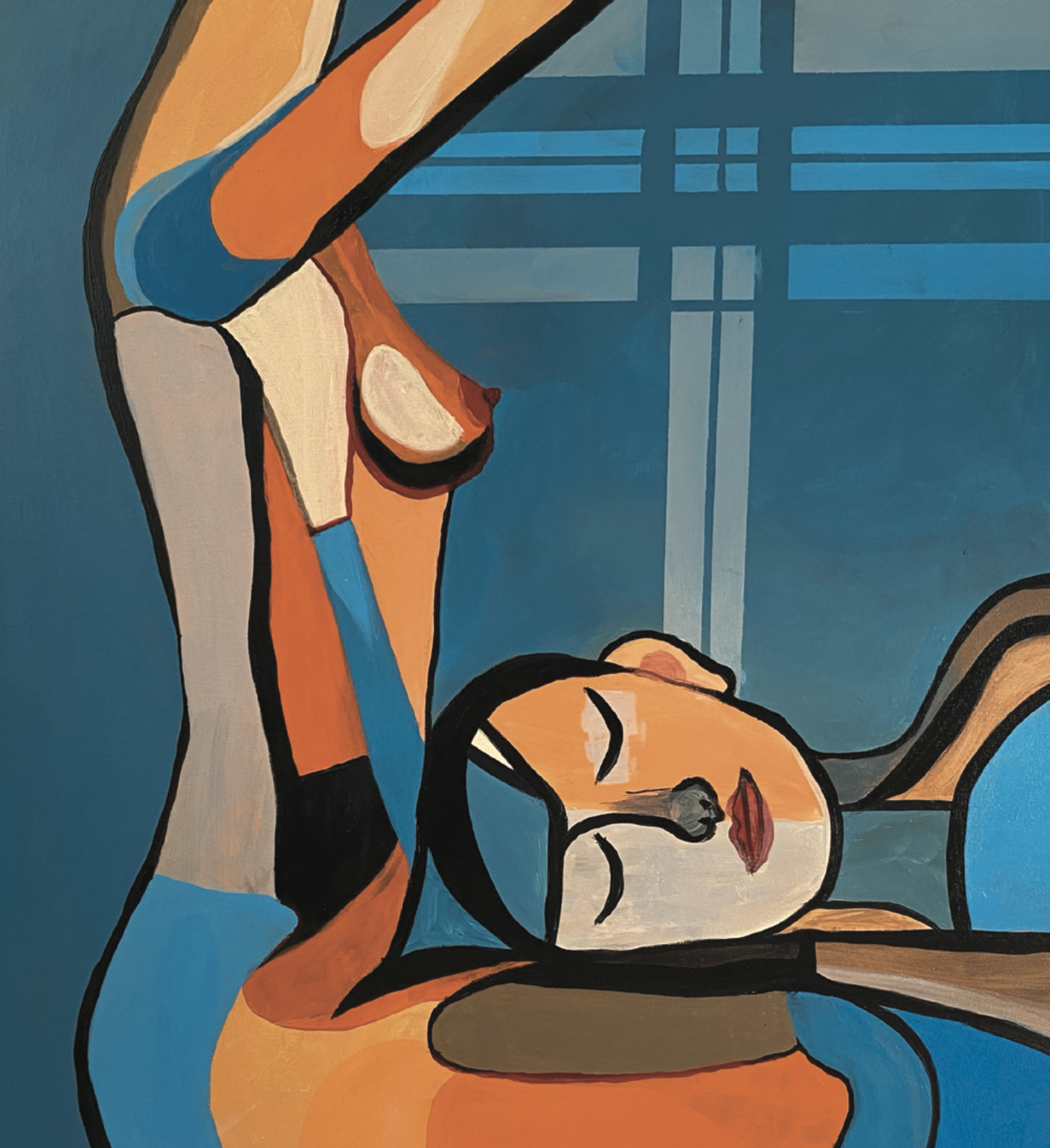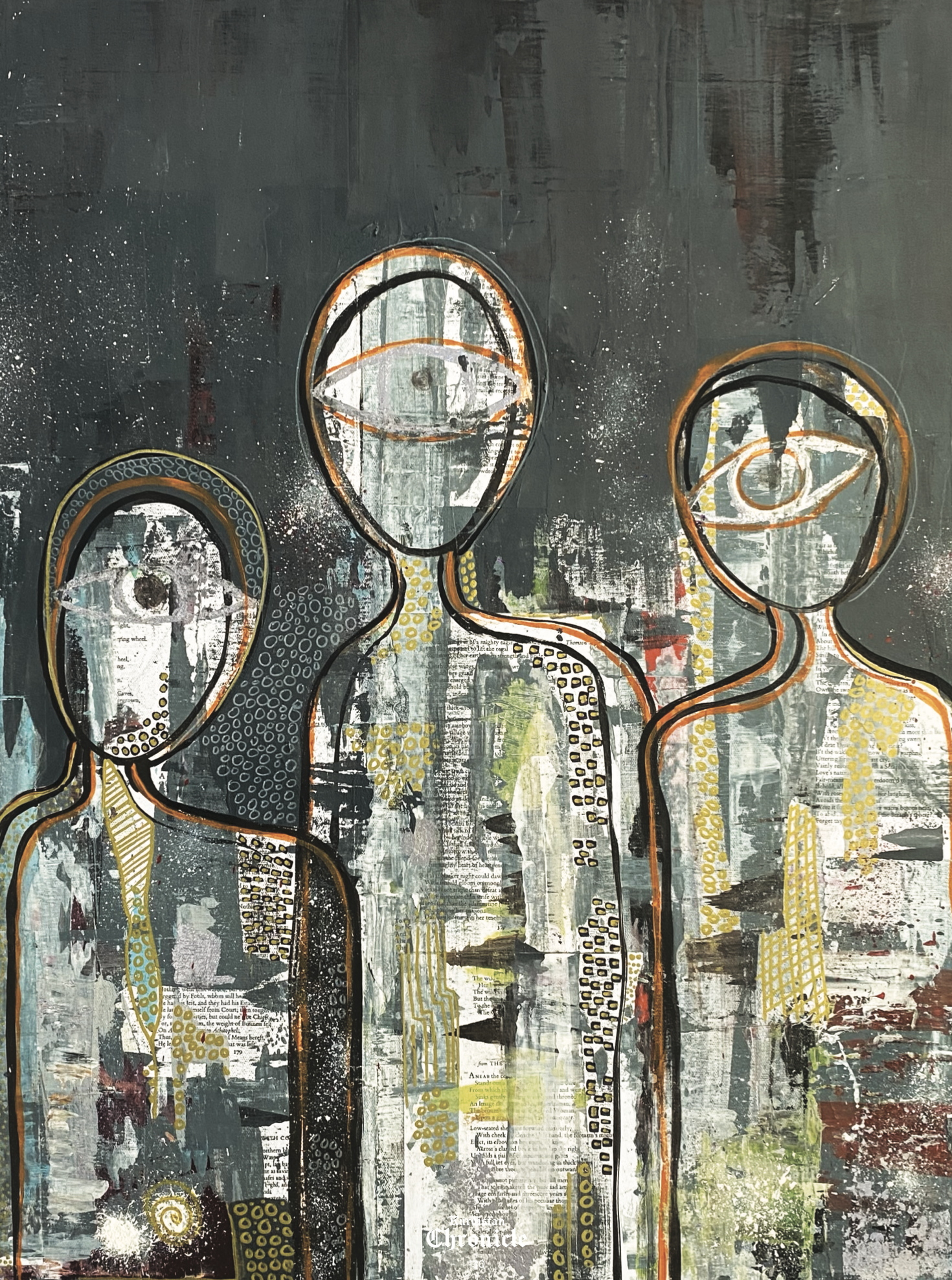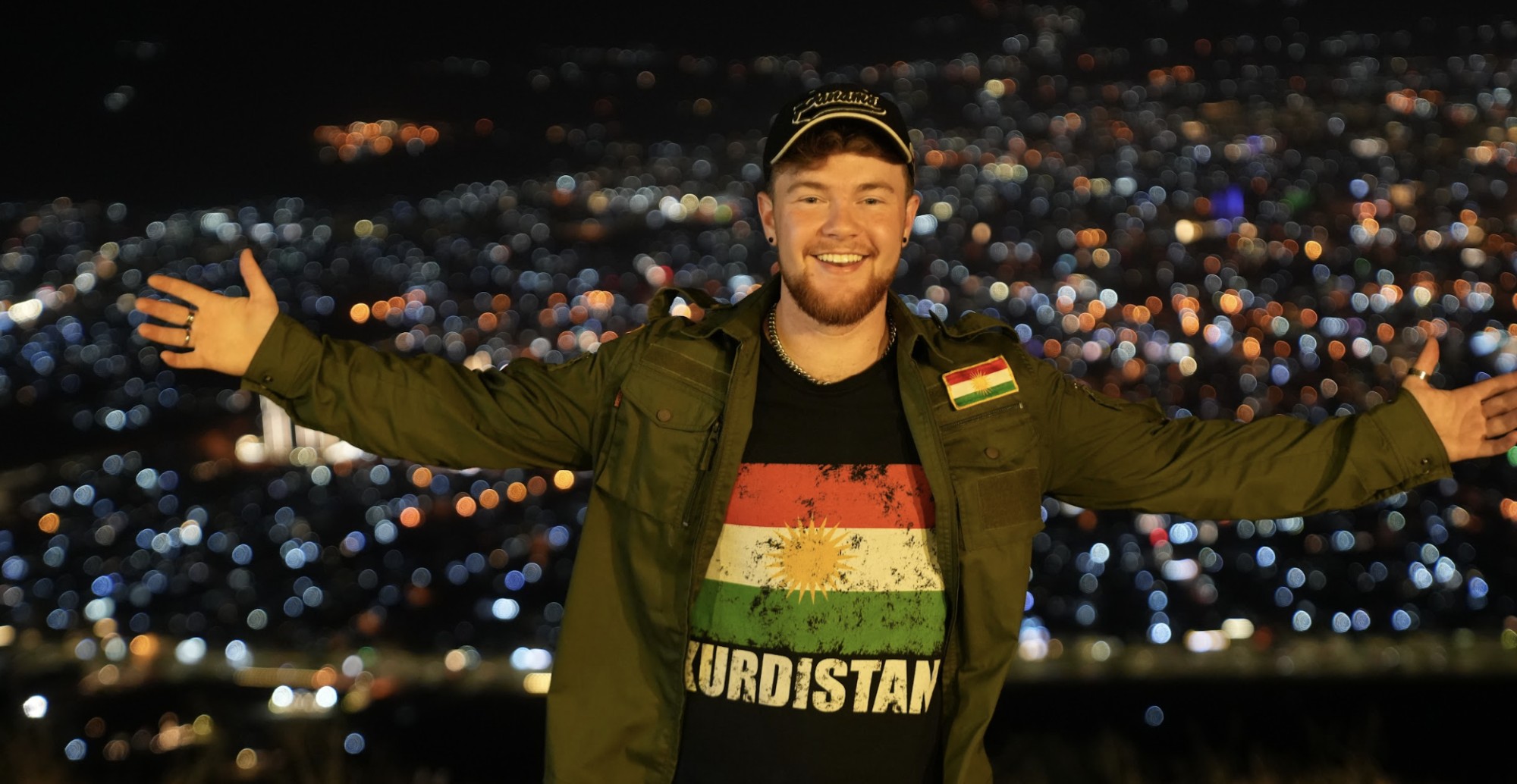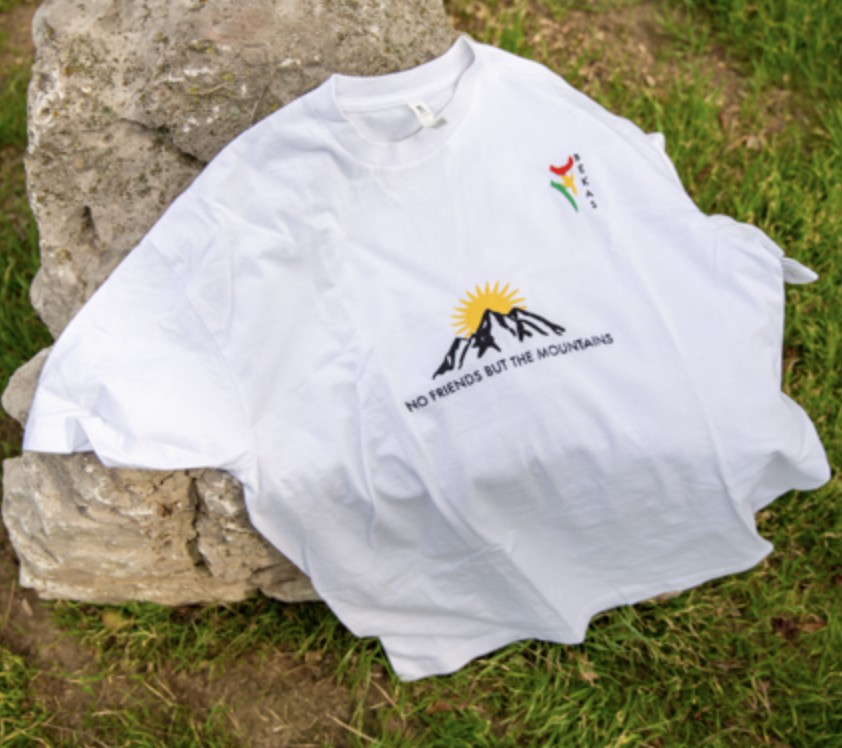Kurdish artist Solin Nirvana, whose first name means “sun” in Swedish, relocated with her family to Erbil in the Kurdistan Region of Iraq to escape conflict in the Kurdish part of Syria. I wanted to meet with her to learn more about her life and work. When I inquired about the location of her gallery, she responded that she had established her own studio at home.
We arrived there, and after making coffee, we ascended to her compact studio, which serves as both a creative space and gallery. On one of the walls, a beautiful arrangement of paintings greeted our eyes, as well as a number of blank canvases awaiting artistic expression. A small desk with numerous shelves stood against another wall, featuring a cherished gramophone. As Solin placed the needle on a record, classical music filled the air.
“The gramophone was a gift from a dear friend; its impact is incomparable. Playing the same music on a speaker or phone lacks the soulful essence of the gramophone,” she revealed.
The music played as I meandered through the studio, contemplating the limited space where Solin’s talent blossomed. I could not help but ponder the necessity of a more expansive setting for artistic growth. To delve deeper into her artistic journey and motivations, we asked Solin about the start of her artistic career eight years ago.

“I started painting with colors in 2015 as a way to release heavy emotions. I view my art as therapeutic, a path towards healing and letting go. While everyone possesses artistic qualities, real artists are those who can express and convey messages through various mediums like paint, the written word, or music,” Solin said.
This led to a discussion about the academic study of art, and we asked Solin if talent was enough to make an artist.
“I never studied art or took courses. My artwork serves as a mirror reflecting my emotions at specific times,” she described. “I embrace limitless creativity. As a self-expressing, nonrealistic artist, my paintings unfold organically, mirroring my emotions.”
Gazing at the wall adorned with Solin’s paintings, I sensed a prevailing melancholy. Recalling her escape from the horrors of the war in Syria, leaving behind her studies in English literature and a city she cherished, we inquired about the war’s influence on her art.
“While war can be a source of inspiration for many artists, I haven’t made it the focus of my work. The endless suffering and torment of wars are similar. However, being a refugee, the war has impacted me indirectly,” she reflected. “It placed me in a position of significant responsibility, exposing me to a broader world beyond the confines of my previous life at school. The war has inspired me in various ways, with its effects manifesting in my paintings and sculptures.”

Separation from reality
One of her paintings caught my eye with its clear symbolism: girls’ braids. The hair of Kurdish women has become a symbol of strength and struggle against ISIS and religious extremism. In trying to understand the story of those braids, we asked about the work’s symbolism and its special atmosphere.
“Most of my paintings relate to women, and many embody my feelings and psychological health at various times. The sculpture Hair Massacre is linked to the Kurdish slogan “Jin, Jiyan, Azadi” and connected to Jina Amini (A Kurdish woman from Saqqez, detained in Tehran for her opposition to compulsory hijab, and later losing her life while in police custody, became the catalyst for widespread protests across Iran in September 2022). Even before that time, Kurdish women’s hair served as a symbol of resistance against ISIS. I created the piece using my own hair to represent the incidents when Kurds were hanged, and each braid has a colored ribbon representing the four colors of Kurdistan’s flag, showcasing the execution process,” Solin said.
As I peeked at her signature on one of her paintings, we inquired about the story behind “nirvana,” a nickname she uses as her last name. She smiled.
“Nirvana means separation from suffering, desire, and the sense of self,” she replied. “It is connected to death and rebirth. I chose this name because every phase of my life felt like a rebirth to something bigger, with more spiritual, mental, and emotional development. As each day passes, I feel more connected to this title. I often joke that my default state is nirvana due to the many moments of feeling separated from reality.”
Happiness is evident on Solin’s face. Despite the suffering she has experienced, she always seemed to be smiling. Despite her elegant black clothes, she looked very happy. What’s the secret? I wondered. We asked her if she practices yoga.

“Yes, I practice yoga. Additionally, I find Buddhism admirable and peaceful. It played a significant role in helping me navigate through a challenging phase of my life,” she responded.
Classical music from the gramophone still filled the room. Soft melodies flowed as we walked around the studio, approaching the gramophone. We talked about nostalgia and how people long for things connected to the past. There is a small postcard with a picture of one of her paintings on it. She showed me the card, which had her signature on the back. We asked her about that painting.
“This painting, Intimacy, depicts love in all its colors. Some see it as male and female, while others see two women sharing an intimate moment, reflecting how human nature is devoid of ego and filled with honesty, truth, and vulnerability. It portrays the comfort and trusted pose of a partner lying on another’s lap,” she explained.
It was a really beautiful painting. We asked Solin where the original was.
“I sold it to a Swiss lady, and she hung it in her office at Bern University. It was the first painting I sold,” she revealed.
We asked her about the rest of her paintings and if she had been able to sell more. Solin patiently and affectionately answered my many questions. Her eyes sparkled mysteriously. She was silent for a moment.
“I have sold many of my paintings and sculptures in other places around the world. However, here in this country, selling involves a lot of negotiation about the price,” she said.
The meeting ended with the last sip of the coffee that had accompanied us during the conversation. Joyous music continued in the background. The young artist Solin bid us farewell with a bright smile, and the sun smiled in the blue sky above.

